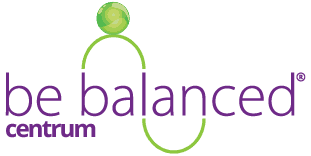Prodýchejte se ke zdravé páteři
Dýchání je životně důležité. Při dýchání přijímáme kyslík a odstraňujeme oxid uhličitý z organizmu. To není nic překvapivého. Je ale dobré si uvědomit, že dýchání je vlastně pohyb. Je to pohyb, který dokonce provádíme úplně nejčastěji.
V dnešní době většinu z nás trápí bolesti páteře. Většinou tyto potíže svádíme na zaměstnání, špatnou postel, nevhodný sport, ale co když za ně může pohyb, který provádíme neustále, aniž si to uvědomujeme?
Co když za tyto potíže může právě způsob, jakým dýcháme?
V našem vědomí panuje mýtus o správném držení těla, který jsme si přinesli možná ze školy, možná ze Sokola. Jak vypadá takové „správné“ držení? No přece vypnout hruď a vtáhnout břicho! A k tomu se zhluboka nadechnout tak, že vypneme hrudník a vtáhneme břicho ještě víc.
Proč je tato zakořeněná představa špatná? Jen si představte, jak pracují svaly v tomto postoji a při takovém dýchání. Jsou potřeba zádové svaly, které nás prohnou v bedrech. Zádové svaly v oblasti beder máme proto značně přetížené, není tedy divu, že nás bedra bolí. Břišní svaly naopak nemusí pracovat skoro vůbec. Břicho jen vtáhneme dovnitř, což se děje spíše pasivně vytažením hrudníku nahoru. Proto máme břišní svaly – mluvíme o hlubokých břišních svalech, ne o těch povrchových, které posilujeme v posilovně – zpravidla zcela vypadlé.
Dalším nepříznivým pohybem je vytažení hrudníku nahoru svaly krku, které jsou díky tomu v trvale zvýšeném napětí. Proto nás bolí a blokuje se krční páteř.
Když se v tomto postavení nadechneme, tak vytáhneme hrudník ještě výš. Hrudník se tedy s nádechem zvedá jen nahoru a s výdechem klesá dolů. Bránice pracuje velice omezeně, zato krční a zádové svaly pracují vydatně.
Při tomto tzv. horním typu dýchání se také hrudník skoro vůbec nerozpíná do šířky. Žebra se tak stávají nepohyblivými, zablokují se ve špatném postavení a postupně celý hrudník a hrudní páteř tuhne. Takováto nepohyblivost musí být nutně vykompenzována v krčním a bederním úseku páteře, které tímto trpí.
Jak na správné dýchání?
Paradoxně by právě naopak měla pracovat téměř výhradně bránice, jakožto hlavní nádechový sval. Tato svalová přepážka mezi hrudní a břišní dutinou vypouklá nahoru se při nádechu oplošťuje, klesá dolů a tím stlačuje břišní orgány. Zároveň se díky tomu zvětšuje objem plic, kam je nasáván vzduch. Dýcháme tak tedy tzv. do břicha, vzduch jde ale samozřejmě do plic. Prostý nádech do břicha ještě úplně nestačí pro správné postavení páteře. K aktivitě bránice je potřeba přidat práci pánevního dna a hlubokých břišních svalů. Je to právě spolupráce těchto svalů v koordinaci s dechem, co udržuje naši páteř ve správném postavení a tudíž bez bolestí a blokád.
Horním typem dýchá většina z nás, a to nejen ženy, ale i většina mužů. Proto nás tolik trápí potíže s páteří. Pokud nezměníme dýchání, těchto potíží se nikdy natrvalo nezbavíme. Často bývá tento návyk velice silně zafixován a už se rozvinuly všechny zmiňované následky. V takovém případě je nutná určitá systematická práce, kdy se manuálně uvolňuje hrudník, a stimulují se svaly ke správné funkci. Úleva na sebe nenechá dlouho čekat. Většinou bývá hned po prvním terapeutickém zásahu.
Terapie založená na dýchání, správném postavení páteře a manuálním uvolňování kloubů páteře a žeber je nejefektivnější, a to především z dlouhodobého hlediska. Lze říci, že je to jediná opravdu účinná neinvazivní metoda, kterou spolehlivě vyléčíte bolesti páteře včetně výhřezů plotének.
Vyzkoušejte si, jak jste na tom se stereotypem dechu
1. Postavte se před zrcadlo, nejlépe jen v podprsence, a sledujte váš dech. Podívejte se nejprve na váš krk. Je váš krk během dýchání klidný? Nebo se s každým nádechem více či méně zapojí svaly krku? Zvýrazňují se jamky nad klíčními kostmi? Nebo se zvedají celé klíční kosti a také ramena? Podívejte se i na břicho. Vyklenuje se alespoň trochu, nebo vůbec ne? Nebo se dokonce s nádechem vtahuje dovnitř?
2. Sledujte váš dech tímto způsobem i v sedě.
3. Pak si lehněte na záda. Dejte si jednu dlaň na břicho a druhou na horní část hrudní kosti a na klíční kosti. Jen sledujte, jaká ruka se při nádechu hýbe a pokud se pohnou obě, tak jaká se pohne jako první.
Výsledek:
Většina z vás bude mít pozitivní první test, tedy horní typ dýchání vestoje. Hrudník, ramena a klíční kosti se zvedají, nebo se jen aktivují svaly krku, zviditelňují se jamky nad klíčními kostmi a jamka uprostřed nad hrudní kostí.
Hodně z vás bude mít pozitivní i test vsedě.
Pokud máte horní dech hodně zafixovaný, budete dýchat nahoru i vleže. Nejvážnější porucha dýchání je, když se břicho při nádechu dokonce vtahuje dovnitř.
Víte, že pohyb je také značně ovlivňován tím, co nosíte na sobě? Právě u dýchání je tento vliv zřejmý. Pokud jste stažené v pase, nebo máte oblečení zvýrazňující pas, pravděpodobně si většina z vás k lepšímu efektu pomáhá vtahováním břicha dovnitř a vytažením hrudníku nahoru. Pokud takové oblečení nosíte běžně, zaděláváte si na budoucí velký problém. Se staženým pasem jste vyřadili z funkce bránici, břišní svaly a pánevní dno. Můžete dýchat pouze nahoru, hrudník se nerozvíjí, krční páteř se přetěžuje a postupně máte pocity ztuhlé šíje a ramen, bolesti hlavy a další potíže s páteří. Dopřejte si volnější oblečení a nebojte se nadechnout do bříška. Koneckonců mužům ani tak nezáleží na obvodu vašeho pasu, ale spíš na faktu, že vás nebolí hlava.
Mgr. Dagmar Lisá (Mostecká)

